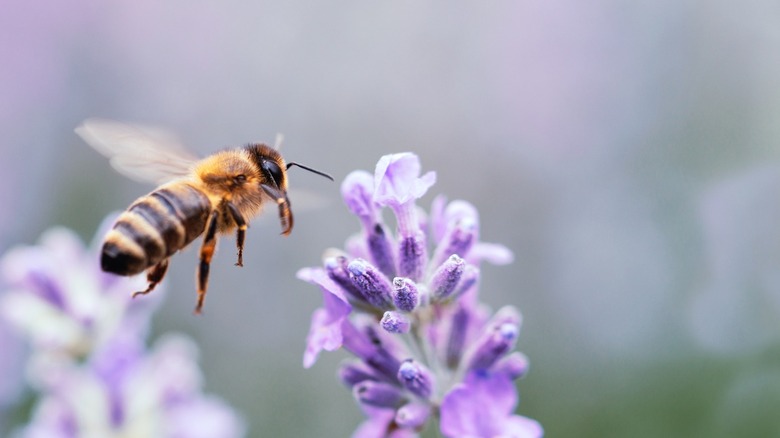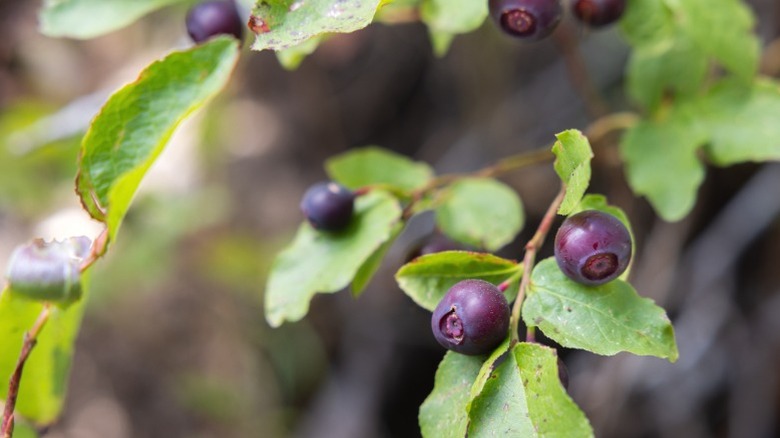The Rare Purple Honey You Can Only Find In North Carolina
"Purple Honey" may sound like the name of an album by some obscure Southern jam band in the 1970s, but it's actually a curious phenomenon localized to a certain part of the Carolinas. You see, every now and then, beekeepers in the Sandhills region of North Carolina will find that their bees have produced a bunch of purple honey. Like, royal purple. Thanos purple. Prince purple. (Although Prince himself preferred spaghetti and orange juice.) We've all seen lavender honey at the farmer's market, but this is something altogether different. What's going on? Nobody really knows for sure — although there is some speculation involving drought conditions and the flowers of a particular invasive plant.
Before we get into "how", though, there's still plenty more weirdness to unpack about this curious substance. This isn't like mad honey, which can be reliably (if dangerously) harvested from specific beehives in the Himalayan Mountains. None of the beekeepers in the area know if their bees made purple honey until they open up their hives and check for themselves; one apiary may find itself getting purple honey reliably, while another apiary just a couple of miles away might not get any. This unpredictability makes it quite rare, and as such quite expensive: a four-ounce jar of the stuff goes for $50. Once you get a taste, though, you'll be greeted with something pleasantly fruity and, well, purple-tasting. Sometimes there's no better word.
Possible explanations include huckleberries and kudzu
So what's the deal? Again, no one really knows — if they knew, beekeepers wouldn't have to wish upon a star in order to get some of that sweet violet elixir in their hives. But there are some theories, one of the most widespread involving the flower of the kudzu plant. Kudzu, an invasive vine and occasional stomachache cure that was introduced to the South from Japan in the 19th century before growing wild enough to swallow entire houses, has purple flowers, and honey from those flowers is indeed amethyst-hued. Could that be the secret?
It's possible, but there are some complications. For one thing, kudzu is called "the plant that ate the South" for a reason; it's hardly rare. So why don't bees elsewhere in the South (or in Japan, for that matter) pollinate kudzu flowers and produce purple honey? Another theory holds that a fruit, not a flower, is responsible for the mysterious honey. Because purple honey is most common after periods without much rain, it stands to reason that the bees might not have many (or any) of their preferred flowers, so they settle for huckleberries, which can grow in hardy clay. While their favorite flowers wilt, the bees take what they can get, and the result is purple honey. This is just another theory, of course, but it's as good a guess as any. These mysteries don't come along every day — savor them while you can.

